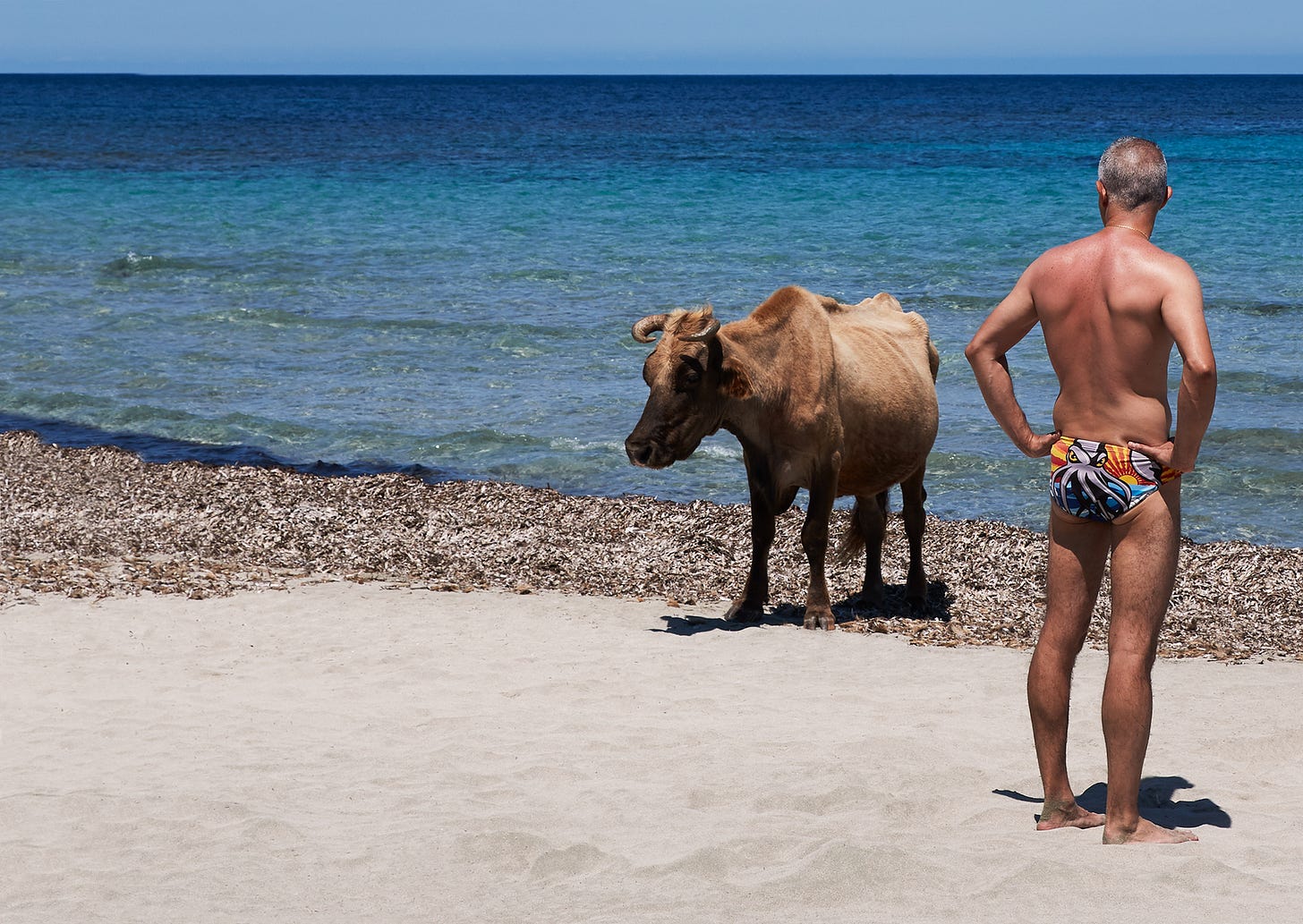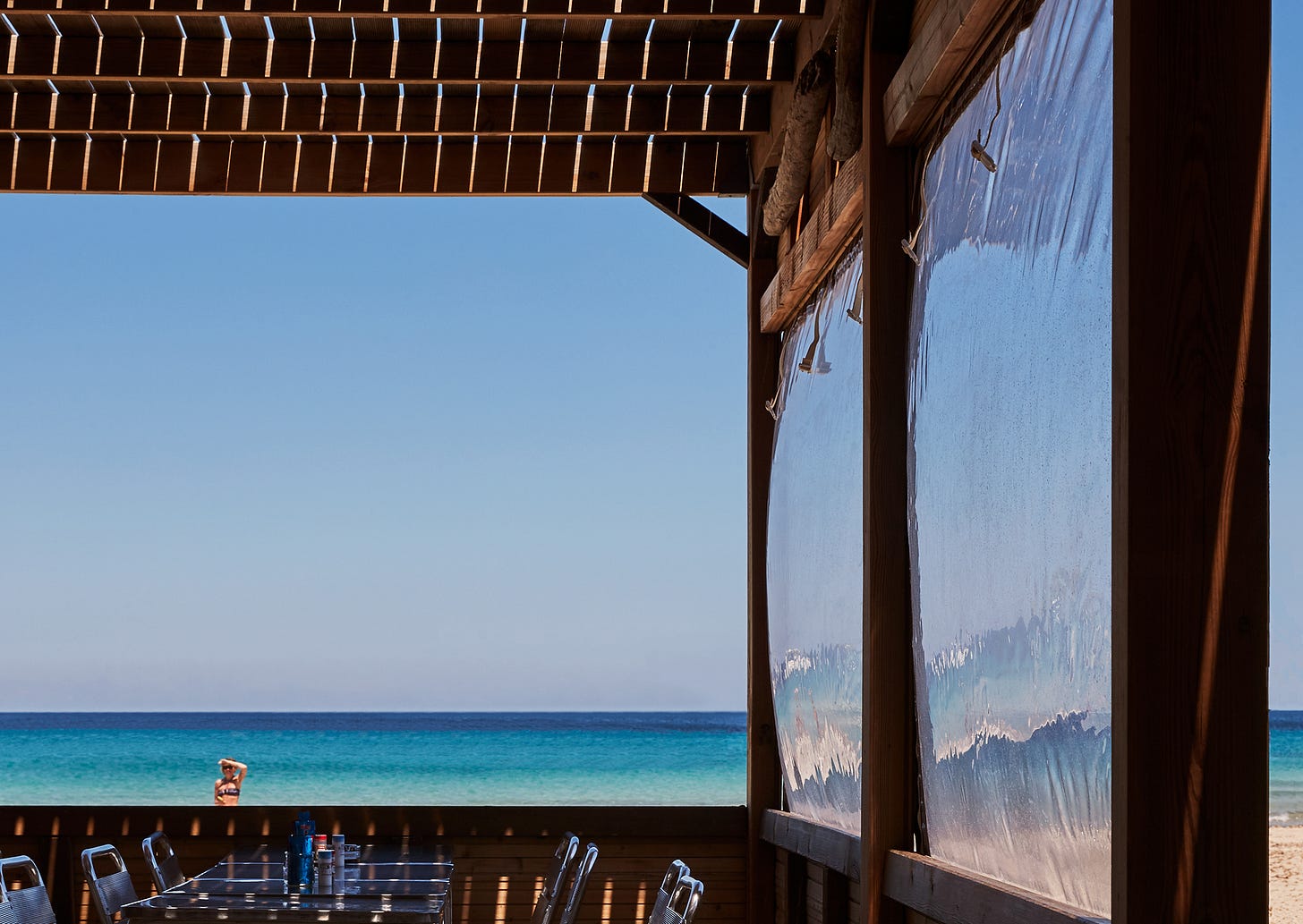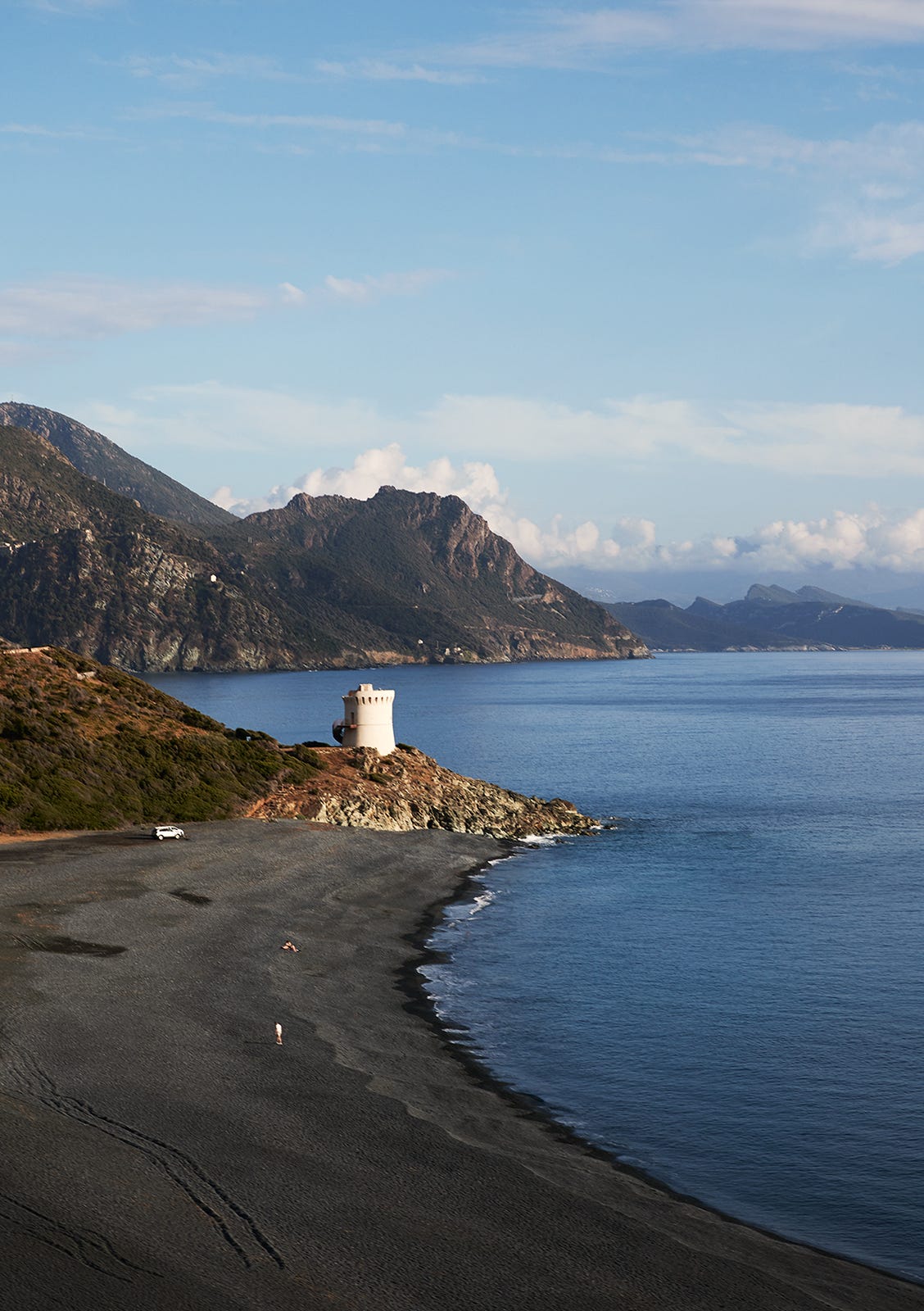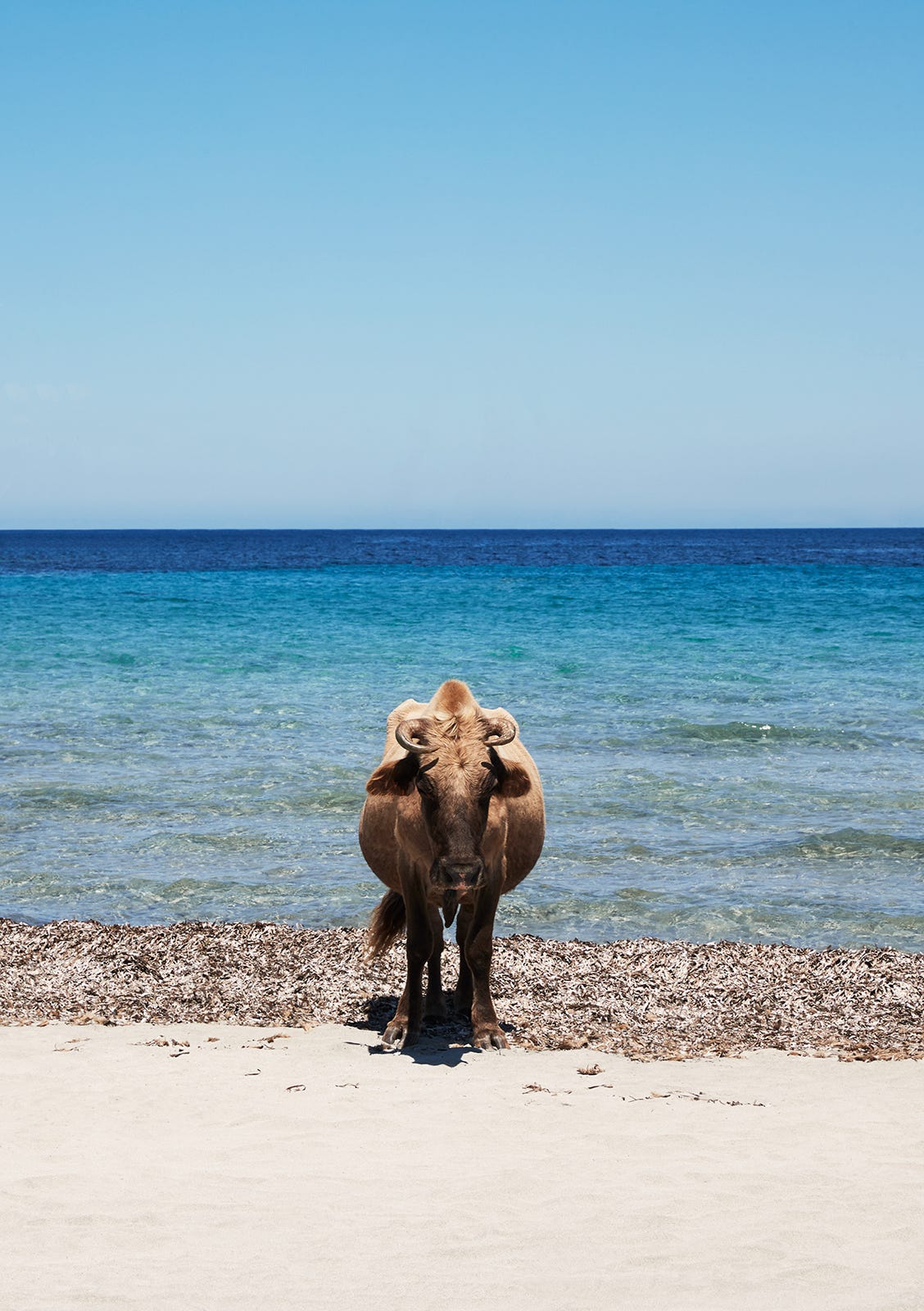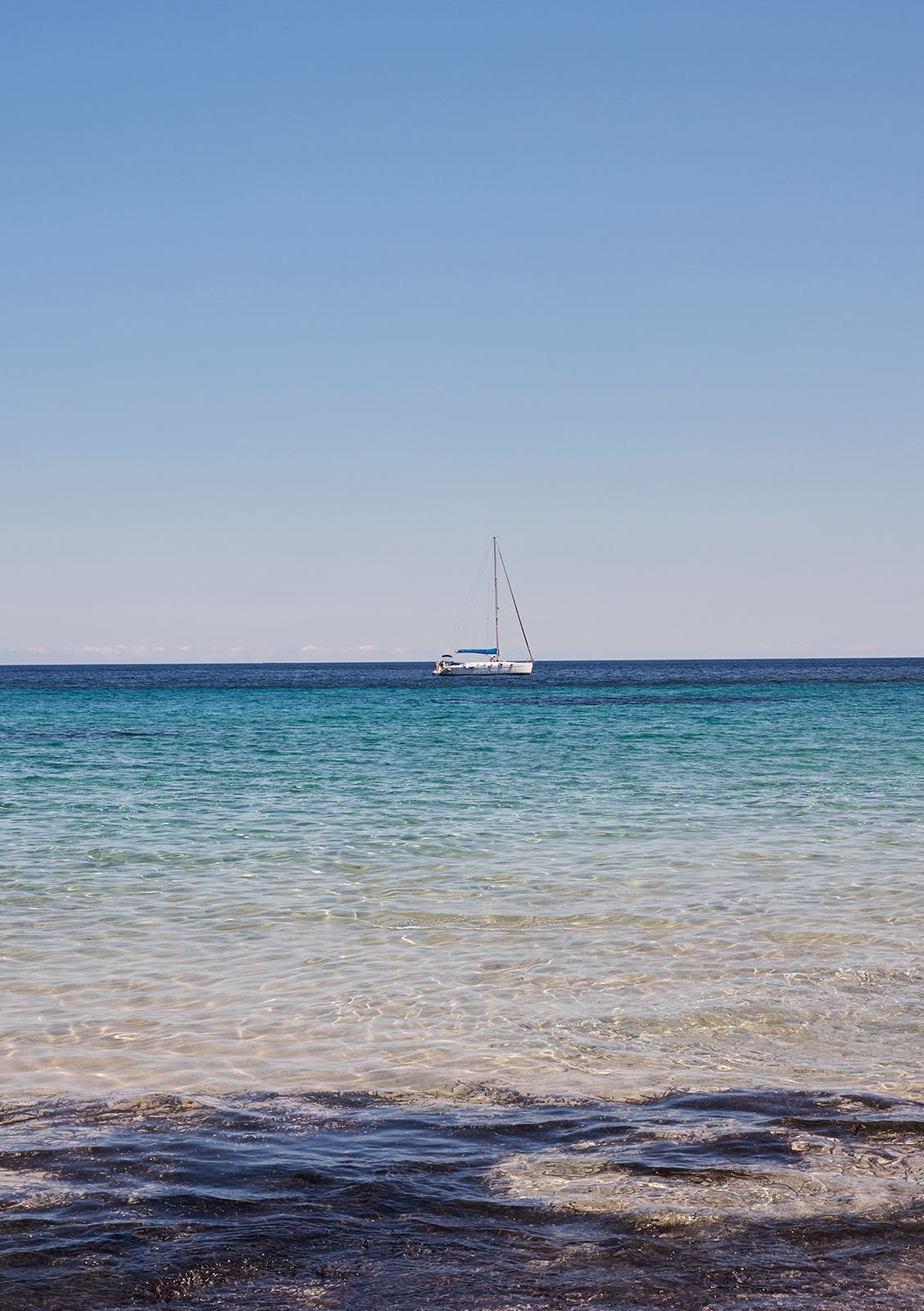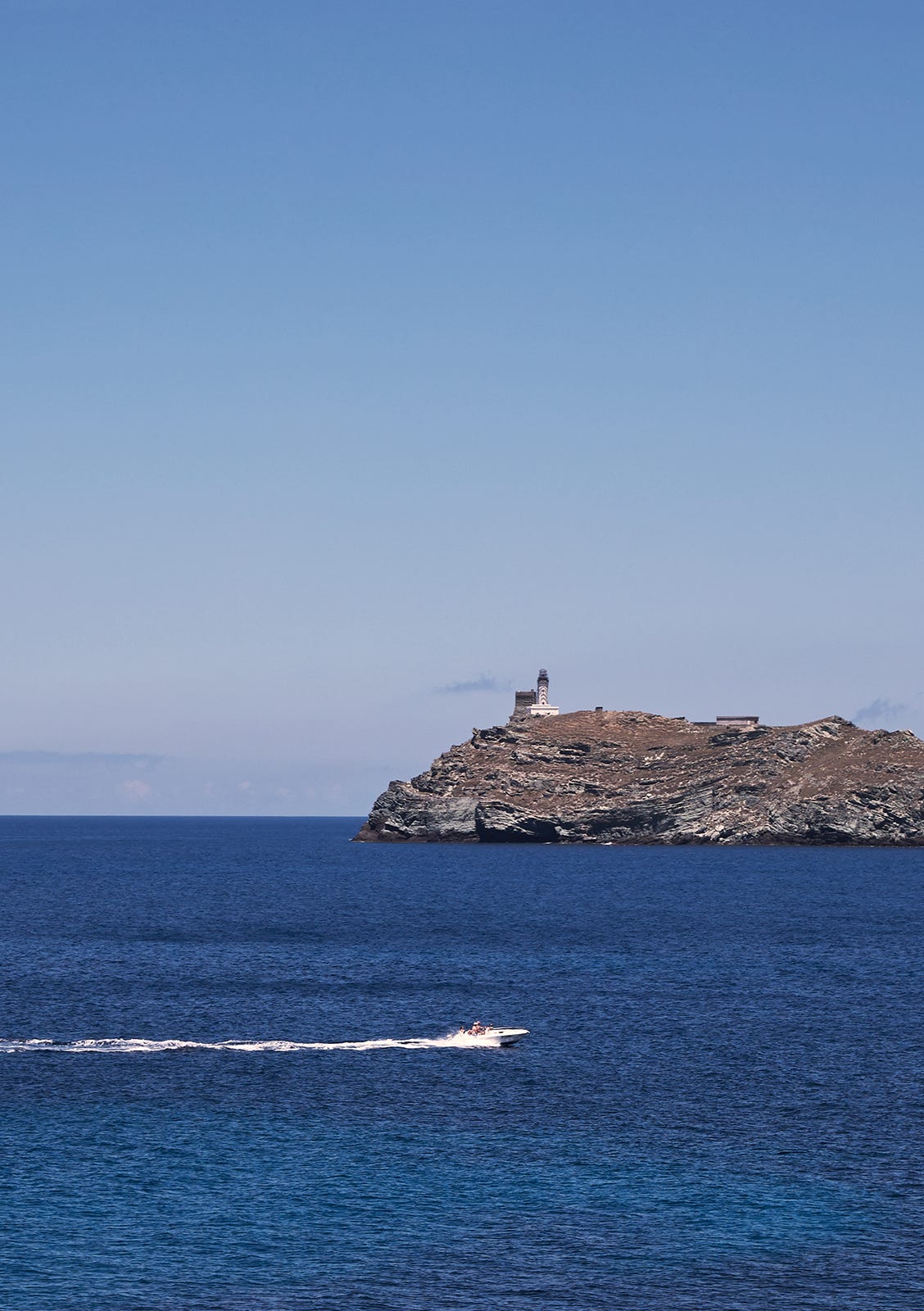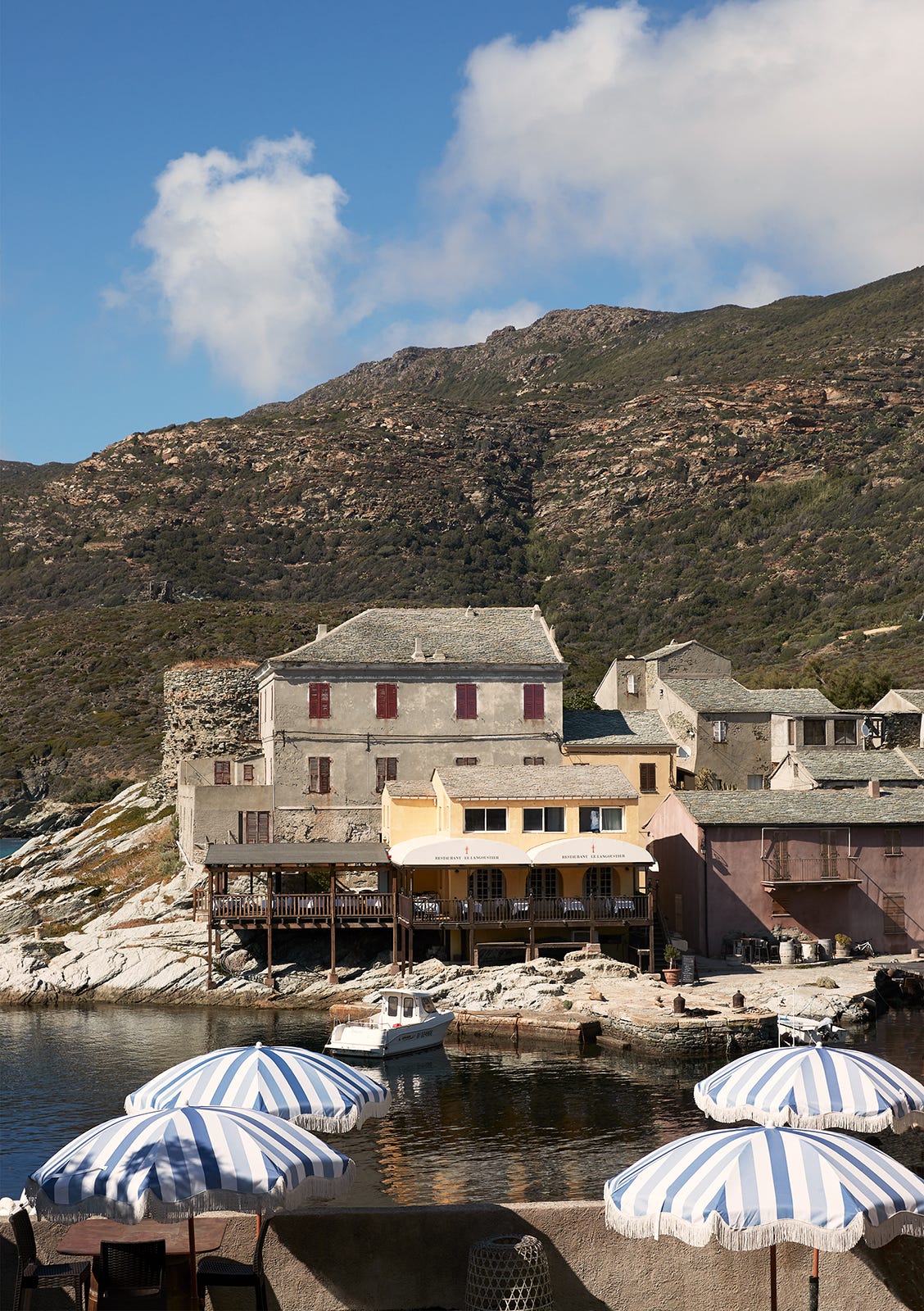The following articles were first published in Lohi Journal’s second print issue.
“The sea was a deep peacock blue, the last colour it assumes before the sun drops below the horizon and it turns to green-tinted mother-of-pearl.”
Dorothy Carrington’s description of the Corsican sunset focused on how the sunrays briefly changed the colour of the sea. Those who live by the sea know that it’s always in a state of becoming something else, no day is ever the same as the day before.
One of the main reasons to visit an island is to experience the seaside, and more specifically, its beaches. If you arrive by boat to Bastia (either coming from mainland France or from Livorno in Italy), you’ll find yourself in a large and rather industrial port. Despite its location by the sea, Bastia is a decidedly urban experience. There are small beaches in the area (like Plage de la Marine de Pietranera), but better to continue farther north for a nicer experience.
For some, the beach is a place to stay for hours, lounging in the sunlight. The long months of autumn, winter and spring are spent in eager anticipation of future lazy days, doing nothing but feeling the sun and salt water against your skin on a sandy beach. For others, rocks are the preferred surface, they like the roughness of the cliffs, sitting directly on large stones, perfect to jump off from.
And then there are those who get restless from sitting by the sea, their backs ache and their minds wander. Looking at the horizon and seeing the boats go by gets old quickly. They appreciate the sea and love going for a swim, but don’t feel the need to stay all day. Regardless of which category you fit into, there’s a place for you on Cap Corse.
The seaside is also different dependent on time of year. In the autumn, the water is still warm, but the number of people is dwindling for each week. Winter is often beautiful and the most dramatic, while spring sees life return through flowers, plants and a new kind of freshness in the air.
Lotu and Saleccia
The beaches of Lotu and Saleccia are technically not on Cap Corse but close enough to be included in this guide. In the Agriates desert and difficult to access – but worth discovering – reachable by a 12 kilometres dirt track.
The path splits at the end between Saleccia (keeping to the left) and the Lotu, taking to its right. Both are white sand beaches, bordered by turquoise water. Rather than risking damaging your car, we suggest you rent a boat in Saint-Florent and arrive from the sea instead. It’s not only safer but more scenic. Lotu is the smallest and closer to Saint-Florent.
Plage de Nonza
Nonza beach, just north of the perched town with the same name, is an unexpected sight – you will see its grey and black sand mixed with pebbles from the road and wonder why it’s so empty.
The first answer is that the colour is due to the old asbestos quarry located in the town of Canari a few kilometres away. There’s no health hazard to visiting the beach, but nevertheless, the idea of picnicking on asbestos is (for most people) not the most attractive.
The second reason is that it’s tricky to find your way down. There is a flight of stairs opposite the small convenience store Belfato Josette that will take you down to the beach. Here you’ll find the third reason that not many people come here – the beach is usually quite hot, in a way that makes it a less pleasurable experience. But the beach’s strange and unusual beauty makes the visit worthwhile.
Grand Plage de Farinole
The large beach at Farinole is one of the few sandy beaches in Cap Corse (though it also has a second pebble part, located on the other side of the Genoese tower). It’s popular among families as it’s easy to access as well as having a car park and a restaurant, L’Ambada.
When the winds are strong (as they often are at Cap Corse), it’s a popular destination for surfing. It’s not the most scenic or spectacular, but that’s not the reason for coming here – it’s the comfort that it provides.
Plage d’Alisu, Plage de Giottani & Plage de Mute
When driving towards the Alisu beach, you’ll first notice the other cars slowing down. Once you approach the beach, you understand why – it’s a small but very picturesque cove, usually not crowded, with clear blue water.There are only a few places to park, so drive slowly and park in whatever space is available. If you miss this (but let’s hope you don’t), aim for Plage Giottani, a few minutes south.
Sometimes it’s nice to be close to a town when you’re on a beach, going back and forth between restaurants, cafés and the beach. Port de Cervino is a quaint town where not much happens, and with the Mute beach only a few minutes south of the main parking. It’s a place where it’s easy to spend a whole day, enjoying the tranquillity of this small corner of Cap Corse.
Plage de Barcaggio & Sentiero dei Doganieri
When visiting Cap Corse, there are very few things that are mandatory to explore – there’s no equivalent to the Eiffel Tower or the Mona Lisa. But the Barcaggio beach shouldn’t be missed.
Getting there is a bit of a challenge, driving on narrow, serpentine roads in bad condition, and then trying to find the parking lot, cleverly hidden just outside the town of Barcaggio. But once you finally reach the beach, you won’t be disappointed.
The beach itself is rather ordinary (though large), with nice sand and crystalline water, but the main attraction is the presence of cows and bulls sunbathing on the beach. The seabed is low, ideal for families, and obviously (as there are even cows grazing the beach) dogs are allowed as well. It’s the ideal place to spend a few days, surrounded by unspoiled nature, in a bay protected from the strong winds. The beach is largely covered by Posidonia plants that grow spontaneously here.
There are very few beaches in the world where you can sunbathe next to animals larger than yourself, so don’t miss this opportunity!
The Barcaggio beach is also on the Sentiero dei Doganieri (Path of the Customs officers), a 19 kilometres long walk that begins in Macinaggio on the east coast and ends in Port de Centuri, thus allowing the hiker to see the Bay of Tamarone, the Church of Santa Maria, the Torre d’Agnello, Tollo, Capo Grosso, Capo Bianco and the Bay of Centuri.
This route was established in 1791 to allow customs officers to control the area. Don’t miss the uninhabited island Giraglia and its characteristic lighthouse on the sea. If you go on this hike, don’t forget your swimsuit and a towel – this is the best place to go swimming in a more private place, without anyone around.
Plage de Tamarone
Plage de Tamarone, in the town of Macinaggio between Punta di a Coscia and Monte di a Guardia, it’s actually available by car if you’re not afraid of driving on dirt roads. Here you’ll find 500 metres of unspoiled sand, an unpretentious restaurant and a small hut (only open in summer) which is an important supply point for hikers to other, more remote beaches in the area.
To get here from the Macinaggio port, turn right by the supermarket and follow the road to the U Stazzu campsite, after which you just continue as it gets increasingly more narrow and uneven.
Erbalunga
There are many places to go swimming on the east coast, but not necessarily as scenic as the beaches on the west and north sides. Most are easily accessible, and the water is nice, but they lack that extra quality that makes it feel magical.
The exception would be Erbalunga, and it’s not thanks to the beach but to the town, which is one of the nicest and most charming on this coastline, with plenty of small cafés and nice restaurants.





